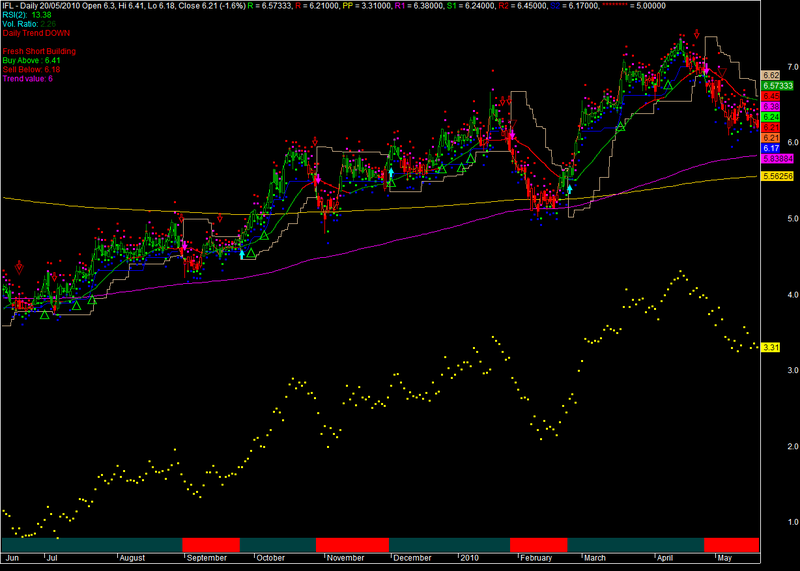

As with MACD, a signal line can be applied to identify upturns and downturns. The bulls have the momentum edge when TSI is positive and the bears have the edge when it's negative. As with many momentum oscillators, the centerline defines the overall bias. The True Strength Index (TSI) is an oscillator that fluctuates between positive and negative territory. Click here to download this spreadsheet example and try it at home. These start with a simple moving average and then use a multiplier for calculation, which means additional historical data is needed to reach true values.

Note that exponential moving averages are used in the calculations. The table above comes from an Excel spreadsheet. A string of large negative price changes pushes TSI deep into negative territory. A string of large positive price changes results in relatively high positive readings, signaling strong upside momentum. In other words, this indicator measures the double smoothed price change relative to the double smoothed absolute price change. The double smoothed absolute price change normalizes the indicator and limits the range of the ensuing oscillator. The indicator is negative when the double smoothed price change is negative and positive when it is positive. The first part, which is the double smoothed price change, sets the positive or negative tone for TSI. TSI = 100 x (Double Smoothed PC / Double Smoothed Absolute PC)

Second Smoothing = 13-period EMA of 25-period EMA of |PC| Second Smoothing = 13-period EMA of 25-period EMA of PCĪbsolute Price Change |PC| = Absolute Value of Current Price minus Prior Price

After these initial calculations, divide the double smoothed price change by the absolute double smoothed price change and multiply by 100 to move the decimal two places. The same double smoothing technique is used for the absolute price change. Third, calculate a 13-period EMA of this 25-period EMA to create a double smoothing. Second, calculate a 25-period EMA of this price change. First, calculate the price change from one period to the next. The True Strength Index (TSI) can be divided into three parts: the double smoothed price change, the double smoothed absolute price change and the TSI formula.


 0 kommentar(er)
0 kommentar(er)
